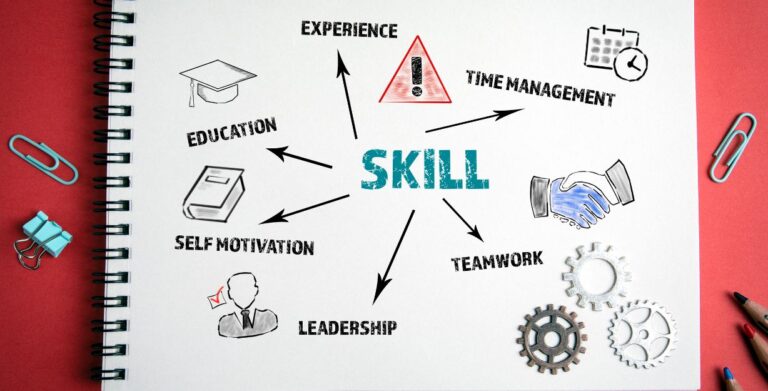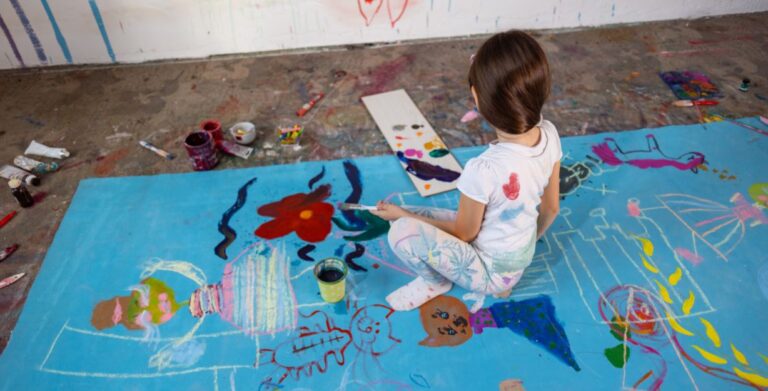which of the following activities supports creative expression development in toddlers?
Creative expression is a fundamental aspect of childhood development, especially in the early years. As toddlers begin to explore the world around them, they engage in activities that stimulate their imagination, helping them develop problem-solving skills, emotional intelligence, and self-confidence. But which activities best support creative expression development in toddlers? In this article, we will dive into the key activities that nurture creativity and explore how parents and educators can encourage it both at home and in the classroom.
What is Creative Expression in Early Childhood?
Definition of Creative Expression
Creative expression in early childhood refers to a toddler’s ability to use their imagination and creativity to explore new ideas, think outside the box, and communicate their thoughts and feelings through various mediums. These may include art, music, storytelling, role-playing, and more.
Why is Creative Expression Important for Toddlers?
Creative expression helps toddlers make sense of the world and express themselves in ways that words might not fully capture. Through creative activities, children develop cognitive skills, emotional resilience, and social competence. It also helps them experiment with problem-solving and critical thinking, laying the groundwork for future learning.
Free play is one of the most important activities for supporting creative expression. It allows toddlers to explore their environment, use their imagination, and take risks in a safe space. Whether it’s pretending to be a superhero or creating their own adventure, free play fosters originality.
Art and Craft Activities
Art is a classic way to encourage creativity. Simple activities such as finger painting, coloring, or playing with clay allow toddlers to express themselves visually. These hands-on activities stimulate their imagination while improving fine motor skills.

Music and Movement
Music and movement are wonderful outlets for toddlers to express themselves. Singing songs, dancing, or even creating rhythms with instruments encourages toddlers to use their bodies and voices to convey emotions and ideas. It also helps them develop a sense of rhythm and coordination.
Storytelling and Role Play
Through storytelling and role play, toddlers can step into different characters and scenarios, expanding their creativity and empathy. Whether it’s acting out a favorite story or creating a new one, role play helps children understand social interactions and develop language skills.
Outdoor Exploration
Outdoor activities like nature walks or playing in the sandbox provide toddlers with endless opportunities for creative thinking. Being in nature allows them to observe, ask questions, and use their imagination to explore the natural world.
The Role of Parents and Educators in Encouraging Creativity
Encouraging Risk-taking and Experimentation
One of the most effective ways to encourage creative expression is to let toddlers experiment without the fear of failure. Parents and educators should create a supportive environment where children feel safe to try new things, even if they make mistakes.
Providing a Rich Learning Environment
A rich learning environment filled with diverse materials and opportunities for exploration encourages creativity. Whether it’s a classroom with colorful art supplies or a home with a variety of toys, the right environment can inspire toddlers to think creatively.
Five Ways to Encourage Creative Expression in the Infant Toddler Classroom
Create a Stimulating Classroom Environment
A stimulating environment filled with open-ended materials (like blocks, paint, or musical instruments) encourages toddlers to explore and express their creativity. The key is to provide materials that allow for different forms of expression.
Incorporate Open-ended Materials
Open-ended materials are items that can be used in multiple ways, such as building blocks, playdough, or cardboard. These materials give toddlers the freedom to create, imagine, and build without limits.
Support Social Play and Interaction
Encouraging toddlers to play together allows them to share ideas and learn from one another. Social interaction is key to fostering creativity, as it enables them to build on each other’s ideas.
Encourage Problem-solving through Play
Problem-solving is an integral part of creative expression. Activities that encourage toddlers to think critically and find solutions—such as building structures with blocks or solving simple puzzles—promote creativity.
Integrate Music and Art into Daily Routines
By incorporating music and art into daily routines, educators can help toddlers develop their creative abilities while making learning fun. Singing, drawing, and even dancing during transitions can turn everyday moments into opportunities for expression.
How Creative Expression Affects Cognitive Development
Enhancing Problem-solving Skills
When toddlers engage in creative activities, they often encounter challenges that require them to come up with unique solutions. This strengthens their problem-solving abilities and prepares them for more complex tasks in the future.

Boosting Emotional Intelligence
Creative expression allows toddlers to explore and express their emotions. Whether they are drawing a picture or acting out a story, they are learning to understand and manage their feelings, which is key to emotional intelligence.
Why Free Play is Crucial for Creativity
Free play offers toddlers the freedom to explore their imagination without any specific goals or expectations. This kind of unstructured play encourages children to think independently and develop their creative thinking skills.
The Connection Between Language Development and Creative Expression
Creative activities, such as storytelling and role play, enhance language development by encouraging toddlers to communicate their thoughts and ideas. As they play and imagine, they are also building their vocabulary and improving their communication skills.
Building Self-Esteem through Creative Activities
When toddlers are given the opportunity to express themselves creatively, they build confidence in their abilities. Completing an art project or performing a dance gives them a sense of accomplishment and boosts their self-esteem.
Overcoming Challenges in Supporting Creative Expression
One of the challenges in fostering creativity in toddlers is balancing guidance with freedom. While structure is necessary, it’s important not to stifle their imagination with too many rules. Finding the right balance can help toddlers thrive creatively.
Wrap Up
Creative expression is an essential part of early childhood development. Whether through free play, art, music, or storytelling, toddlers use creativity to explore the world, solve problems, and express their emotions. By providing them with the right opportunities and environment, parents and educators can help toddlers unlock their full creative potential.
FAQs
- What is creative expression in toddlers? Creative expression refers to the ability of toddlers to use their imagination and creativity to express their thoughts, emotions, and ideas through various activities such as art, music, and play.
- How can I encourage my toddler’s creativity at home? You can encourage creativity by providing open-ended toys, allowing free play, engaging in art activities, and encouraging role play or storytelling.
- Why is free play important for toddlers? Free play allows toddlers to explore their imagination, develop problem-solving skills, and express themselves without restrictions.
- What role does music play in creative development? Music helps toddlers express themselves emotionally and physically, improving their coordination, rhythm, and ability to communicate through sound and movement.
- How does creative expression benefit cognitive development? Creative expression enhances problem-solving skills, boosts emotional intelligence, and encourages language development by allowing toddlers to explore and communicate their ideas.






